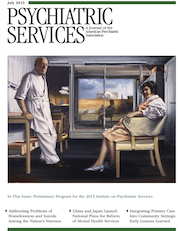Diffusion of Antipsychotics in the U.S. and French Markets, 1998–2008
Abstract
Objective
Second-generation antipsychotics captured most of the U.S. antipsychotic market shortly after their introduction. Little is known about how second-generation antipsychotics have diffused in other countries with different health systems. The study objective was to describe trends in antipsychotic use in the United States and France from 1998 to 2008.
Methods
Pharmaceutical policies in France and the United States are briefly described, followed by descriptive data on quarterly prescriptions for oral antipsychotics dispensed between January 1998 and September 2008. Data are from Xponent for the United States and the GERS database for France. Trends in the use of first- versus second-generation antipsychotics and in ingredient formulations of second-generation antipsychotics used are reported.
Results
Between 1998 and 2008, total antipsychotic use in the United States increased by 78%. Total use in France was consistently higher despite a 9% decrease during the period. By 2008, second-generation antipsychotics represented 86% of the antipsychotics sold in the U.S. market, versus only 40% of the French market. However, average annual growth rates in use of second-generation antipsychotics were similar in the two countries. In France, use of all but one second-generation antipsychotic steadily increased, whereas in the United States trends in the use of newer drugs varied substantially by drug. For example, use of olanzapine decreased after 2003, but use of quetiapine increased.
Conclusions
These results highlight markedly divergent trends in the diffusion of new antipsychotics in France and the United States. Some differences may be explained by differences in health systems; others may reflect physicians’ preferences and norms of practice.



